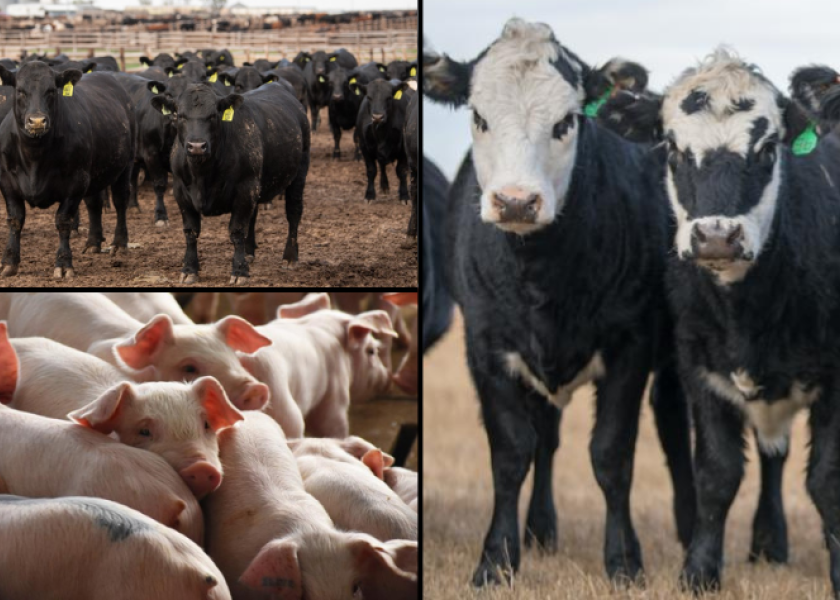Bagley Risk Management Solutions: Your Shield Against Unpredictability
Bagley Risk Management Solutions: Your Shield Against Unpredictability
Blog Article
Trick Variables to Consider When Choosing Livestock Danger Security (LRP) Insurance Policy
When evaluating choices for Livestock Danger Defense (LRP) insurance coverage, numerous essential variables require mindful consideration to make sure effective danger monitoring in the agricultural market. Picking the best insurance coverage options tailored to your certain livestock operation is vital, as is recognizing how exceptional costs correlate with the degree of defense offered.
Protection Options
When taking into consideration Livestock Risk Security (LRP) insurance policy, it is crucial to comprehend the various coverage choices readily available to minimize threats in the farming market. Livestock Risk Defense (LRP) insurance policy uses different coverage alternatives customized to satisfy the diverse demands of animals producers.
Another essential protection choice is the endorsement duration, which identifies the length of time the insurance coverage holds. Producers can pick the recommendation period that ideal fits their production cycle and market problems. Additionally, insurance coverage degrees and rates differ based on the kind of livestock being insured, giving manufacturers the flexibility to tailor their insurance coverage intends according to their certain requirements.
Recognizing the different insurance coverage choices readily available under Livestock Threat Security (LRP) insurance policy is important for producers to make educated choices that efficiently shield their livestock procedures from market uncertainties.
Costs Prices

Livestock Risk Protection (LRP) insurance provides important protection options customized to alleviate threats in the agricultural market, with a considerable aspect to consider being the calculation and framework of premium prices. These include the kind and number of livestock being guaranteed, the insurance coverage level selected, the current market rates, historic cost information, and the size of the insurance coverage period.
Premium expenses for LRP insurance coverage are usually calculated based upon actuarial data and take the chance of evaluation models. Insurance firms examine historical information on livestock costs and production expenses to determine an ideal premium that mirrors the level of threat involved. It is crucial for livestock manufacturers to very carefully evaluate premium expenses and insurance coverage choices to guarantee they are sufficiently protected against possible financial losses because of adverse market conditions or unpredicted events. By comprehending how superior prices are calculated and structured, producers can make educated choices when selecting the ideal LRP insurance coverage policy for their operation.
Qualified Animals
The resolution of qualified animals for Animals Threat Defense (LRP) insurance policy coverage involves cautious consideration of particular requirements and features. Animals kinds that are commonly qualified for LRP insurance consist of feeder livestock, fed livestock, lambs, and swine. These pets need to satisfy particular credentials connected to weight arrays, age, and planned use. Furthermore, the eligibility of livestock may vary based on the specific insurance service provider and the terms of the plan.
Feeder livestock, for example, are generally eligible for LRP protection if they drop within specified weight arrays. Lambs are another classification of animals that can be thought about for LRP insurance policy, with factors such as weight and age playing a vital role in identifying their qualification.
Before choosing LRP insurance coverage for animals, producers must meticulously review the eligibility standards outlined by the insurance coverage provider to ensure their animals satisfy the essential requirements for coverage.
Policy Versatility
Policy flexibility in Animals Danger Protection (LRP) insurance policy enables producers to customize coverage to match their particular demands and run the risk of management approaches. This flexibility encourages livestock manufacturers to customize their insurance policy policies based on variables such as the type of animals they own, market problems, and specific danger resistance levels. By using customizable choices, LRP insurance policy allows manufacturers to efficiently manage their threat exposure while securing their animals operations versus unpredicted market volatility.
Insurance Claims Refine
Upon experiencing a loss or damages, producers can start the insurance claims procedure for their Livestock Risk Security (LRP) insurance policy by promptly contacting their insurance coverage provider. It is important for manufacturers to report the loss immediately to speed up the insurance claims procedure. When connecting to the insurance policy service provider, producers will need to supply thorough details about the incident, including the date, nature of the loss, and any type of appropriate paperwork such as vet documents or market value.

After the evaluation is full, the insurance coverage provider will certainly decide pertaining to the insurance claim and connect the outcome to the manufacturer. The producer will certainly receive payment according to the terms of their Animals Risk Security (LRP) insurance coverage plan if the case is approved. It is essential for manufacturers to be aware of the cases procedure to make certain a smooth experience in case of a loss

Final Thought
Finally, when choosing Livestock Risk Protection (LRP) insurance coverage, it is vital to think about protection choices, premium costs, eligible animals, plan adaptability, and the insurance claims process. These essential elements will aid make certain that breeders and farmers are adequately protected versus prospective dangers and losses related to their animals procedures. Making an informed decision based upon these considerations can ultimately bring about much better monetary safety and security and comfort for animals producers.
Animals Danger Protection (LRP) insurance policy uses different coverage alternatives tailored to meet the varied needs of animals manufacturers.The determination of qualified livestock for Animals Danger Protection (LRP) insurance policy coverage entails cautious consideration read of details standards and qualities.Plan adaptability in Livestock Threat Security (LRP) insurance enables producers to customize coverage to match their particular demands and run the risk of management approaches.Upon experiencing a loss or damages, manufacturers can start the claims procedure for their Livestock Danger Protection (LRP) insurance coverage by quickly calling their insurance copyright.In final thought, when picking Animals Risk Security discover here (LRP) insurance policy, it is vital to take into consideration coverage choices, premium expenses, qualified livestock, policy versatility, and the cases procedure.
Report this page